Interviews with experts and opinion leaders from our research network
The importance of diversity and inclusion (D&I) * in corporate management is being highlighted with the globalization of corporate activities and the involvement of people with diverse personalities. It is not easy to accept different cultures and identities and develop alongside one another. And looking back on the history of Japan, there are many historical examples of cross-cultural exchanges, successful or otherwise. Thinking about these historical facts, why they happened, and what historical figures based their actions on at the time gives us useful insight into the problems we face today. For this discussion, we have invited Professor Kazuto Hongo, a historian specializing in medieval Japanese history, to examine examples of our predecessors and to consider paths for global growth based on D&I. (The interviewer is Osamu Naito, Chairman of Hitachi Research Institute.)
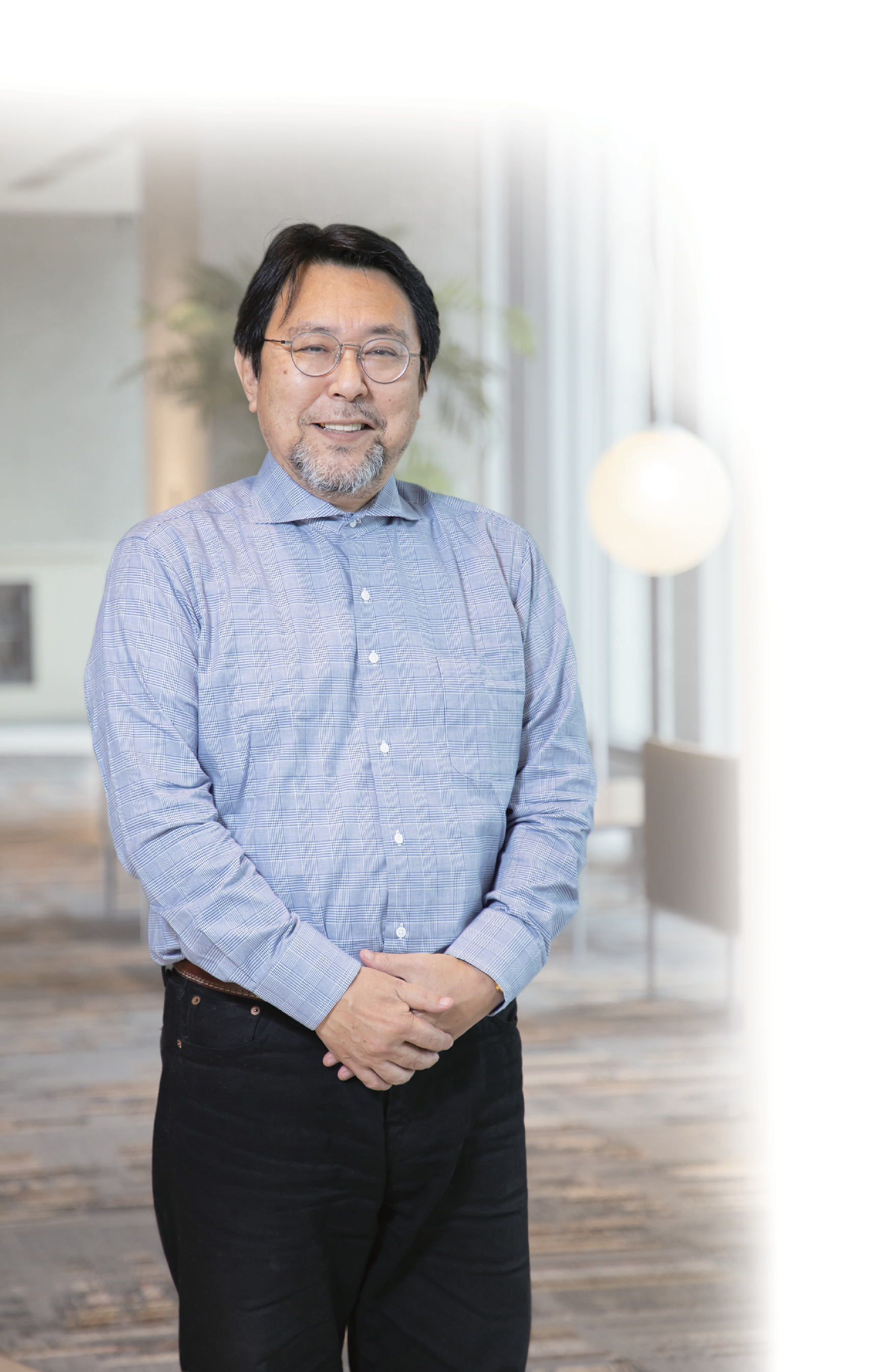
Professor, Historiographical Institute, The University of Tokyo
Born in Tokyo in 1960. Doctor of Literature. In 1988, he joined the Historiographical Institute, the University of Tokyo. In 2005, he became an Assistant Professor, Interfaculty Initiative in Information Studies, The University of Tokyo. He became an Associate Professor, the Historiographical Institute, the University of Tokyo in 2008 and assumed his current position in 2012.
Having studied medieval Japanese history under Prof. Susumu Ishii and Prof. Fumihiko Gomi at the Faculty of Letters and Graduate School of the University of Tokyo, he specializes in medieval political history and paleography. Compiled the 5th volume of Dainippon Shiryo at the Historiographical Institute. He was in charge of historical background research for the NHK historical drama Taira no Kiyomori.
Authored works include Rules of Japanese History (Kawade Shobo Shinsha), History of Japan in Failure (Chuokoron Shinsha), History of Japan in Discomfort (Sankei Shimbun Publications), and What IFs in history (Fusosha Publishing).
Naito:I read your new book Rules of Japanese History with great interest. There is a passage about the Mongol invasions of Japan that ponders the different possible outcomes had the Kamakura bakufu been educated. The diplomatic letters from the Mongols were surprisingly polite and did not seem to demand submission. You point out, therefore, that if the Kamakura bakufu had understood the Mongol’s intent properly, it would not have resulted in war. I thought this was interesting from the viewpoint of geopolitical risk. I looked into it myself and found out that the Yuan Dynasty (the Mongols) had sent emissaries to Japan many times and had taken about two Japanese people from Tsushima to the former capital. However, the bakufu did not reciprocate the meetings. If they did not want to become involved, they should have said so, but instead they continued to fail to handle the situation properly. On the other hand, Prince Shotoku’s dispatch of Japanese envoys to the Sui dynasty comes to mind as an example of active exchange. Although the term “Emperor of the Land of the Rising Sun”*1 garners attention, if we read the first half of the Book of Sui carefully, it first says something that would please the other party-“The emperor of this country is a Bodhisattva and he is striving to revive Buddhism once more”-then continues to include quite rude things later. Intelligence means carefully researching the other person in advance and developing a strategy. However, I wonder why the Kamakura bakufu could not do what Prince Shotoku did more than 650 years earlier. Was there no sense of danger because Japan was not directly facing the continent?
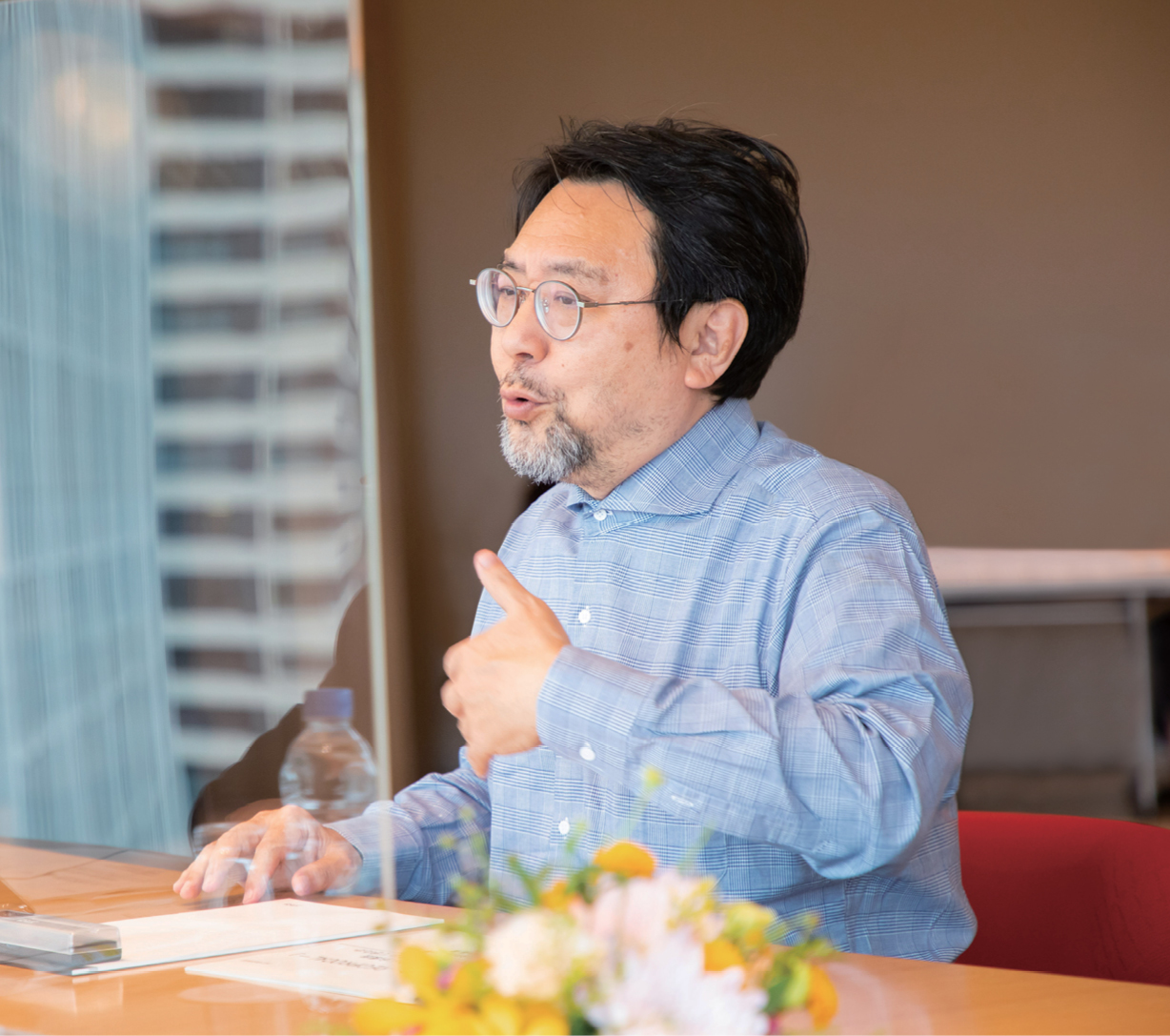
Hongo:In the era of Umayado no Oh (Prince Shotoku), following the tradition of the King of Wa before, Japan maintained constant dialogue with Chinese continent and the Korean Peninsula through envoys. People who were called elite at the time always looked west. They never looked east, so I don’t think they understood what the area around Tokyo was like at all. They assumed that great things could not come from the east, and they believed there was no need to therefore learn about the east. If you think about it, when Japanese envoys were sent to the Sui Dynasty and later to the Tang Dynasty, they always looked west. In 894, Sugawara no Michizane stopped sending the Japanese envoy to the Tang Dynasty. As we can see from the diaries of the nobility at that time, they then become arrogant. There grows a tendency to no longer bow to people from outside Japan, believing that there is no one greater than themselves. When messages from the Mongols arrived, the Bakufu’s response was terrible, but the Imperial Court’s response was also not good. One should have pride, and it’s not good to be self-deprecating, but it’s important to be aware of one’s own faults and inadequacies and to learn from others’ strengths. I heard that Hitachi wanted to learn from ABB in Switzerland, an excellent company, in acquiring ABB’s power grids business (transmission and distribution network)*2. That kind of attitude is important. The Kamakura bakufu had forgotten this, which led to the Mongol invasions of Japan.
Naito:When looking at a field or a person we don’t know well, we say to ask someone who knows it well. This is a bit like choosing which consultants to work with. Some consultants are better suited for different things.
At that time, Japan maintained relations with the Song Dynasty, and the bakufu received various wisdom from monks from the Song Dynasty. Given this, there are people who have interacted directly with the Mongols, so I imagine that if the bakufu had listened to them, obtained information from them, and thought about the situation carefully, it would have developed differently. The Mongols may have eventually attacked in some form, but I think the bakufu could have at least had time to prepare.
I think this also applies to modern international relations. Positioning and information acquisition is critical. It doesn’t have to be a secret information; it is important to practice how to read public information and then deal with the other country. That is in our national interest. If we read this passage about the Mongol invasions of Japan and replace it with modern geopolitical analysis, it seems to suggest something interesting.
Hongo:The Zen monks of the Song Dynasty who taught various things to the Kamakura bakufu, had their homeland destroyed by Mongols. If we asked them if they had good feelings toward the Mongols, the answer would likely be no.
Naito:Looking back through Japanese history, are there other figures we should pay attention to in terms of encounters with different cultures?
Hongo:Nakahama Manjiro, or John Manjiro, is an interesting example. When I look at him, I can understand what Japanese people were like at the time. A sailor was in distress and was rescued by an American ship. The captain liked him very much and encouraged him to study. As a result, Manjiro quickly mastered English and came back to Japan knowing many things about the US.
Later, when the Japan-US Treaty of Peace and Amity was to be concluded, he worked behind the scenes to ensure a peaceful conclusion of the treaty. In Manjiro’s case, it was more like being thrown into a different culture than encountering it, and it surely was difficult, but looking at him, I really think that Japanese people demonstrate great talent in situations like these.
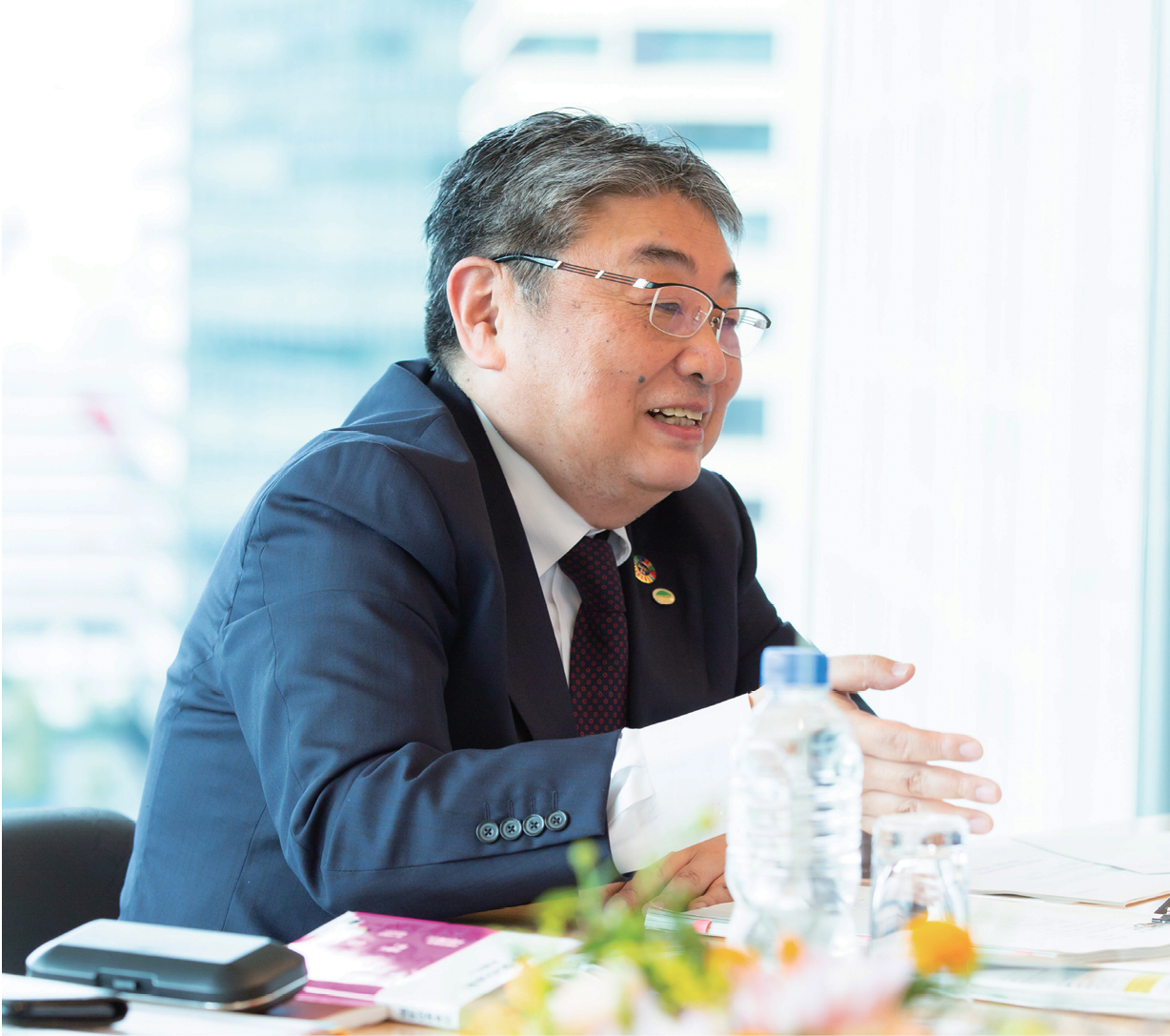
Naito:I am surprised that someone who saw the reality of the US at that time came back at the end of the Edo period at such a critical time. There weren’t many other people who could understand English. But more than that, he must have had considerable talents and knowledge. But in order for his talents to flourish, he needed an opportunity.
Forced events that no one wants, like being shipwrecked, turn into opportunities when you realize it. Like shining a spotlight on a person, it is a chance for that individual’s life to unfold. It is often said that, given the chance, grab whatever you can. But John Manjiro’s story is also truly miraculous. Educational opportunities are everywhere.
Hongo:Kenjiro Yamakawa was also a wonderful person. He was a physicist during the Meiji era and president of The University of Tokyo. Yamakawa was selected as a government-sponsored exchange student to the US and held a degree in physics from Yale University. Before studying physics, of course, he had many opportunities to study, and he would have been exposed to the lessons of history. Then, he encountered physics and demonstrated great talent. Yamakawa’s background as a Byakkotai*3 during his childhood is unusual, but he was a person who laid the foundation of Japanese physics. He was truly wonderful.
It is often said that we need inherent qualities and talent to make the most of the opportunities we are given. Thinking about the origins of Japanese science, we can look to wasan, Japanese mathematics, in the Edo period. Seki Takakazu is well known, and wasan was very popular among common people. It is amazing that problems were solved at the time using trigonometric functions and the Pythagorean theorem.
Naito:Sangaku tablets with mathematical riddles are found in shrines. I remember being surprised to see tablets dedicated with problems like “Find the size of XX.”
Hongo:A problem is posed on a sangaku tablet, and after writing the answer, that person poses a new problem. The Edo period was a time when knowledge in Japan as a whole grew tremendously. That’s probably because it was peaceful.
Naito:I don’t mean to change the subject, but I am interested in the culture and literary persons*4 of Kyoto in the latter half of the 18th century, the so-called Horeki and Tenmei eras. Painters at the time include Maruyama Ohkyo, Nagasawa Rosetu, and Ito Jakuchu...
Hongo:Ike no Taiga and Yosa Buson are two more examples.
Naito:Right. Also, Ueda Akinari, who wrote Tales of Moonlight and Rain. Hori Keizan was a Neo-Confucian scholar, and Tejima Toan was a moral philosopher. In addition, Yamawaki Toyo and Shiba Kokan studied Western knowledge. These figures were each active and lived in a very limited space and time in Kyoto in the latter half of the 18th century.
Looking at the historical background, it is the time of Tanuma Okitsugu. While there was corruption, the politics and economy at the time were stable. Neo-Confucianism was regarded as a legitimate thought of the bakufu in the early Edo period, but it seems that a movement to reread the original texts of Neo-Confucianism was started by Confucian scholars such as Ito Jinsai and Ogyu Sorai in this period. It is said that there was a zeitgeist to review the authority.
Given the economic stability at the time, Kyoto was home to many talented people and culture boomed all at once. We might say that cultural innovation took place, and I think this is one example of the smart cities we are aiming for today. It may be difficult, but if we understand the mechanisms that drive this cultural innovation, we may be able to create cities that can drive new intellectual innovation.
In fact, last time I invited Professor Noburu Notomi, who specializes in ancient Western philosophy at The University of Tokyo, to talk about intellectual innovation in Athens. When I searched for similar examples in Japanese history, I came up with Kyoto in the latter half of the 18th century. In the Edo period, there may be other cities where intellectual innovation flourished during the Bunka-Bunsei and Genroku eras.
Hongo:From the perspective of cities and local communities, medicine and medical care in the Edo period are interesting. Communities were very much alive in these areas. It really feels like the community was behind it, not the bakufu or local domain. The powerful people in the community brought up a new generation of doctors. Maybe it’s because doctors contribute visibly to the community.
They invest in people with talent and knowledge and allow them to study. If they wanted to study medicine, they sent their students to Osaka, Kyoto, and Nagasaki where they could learn the most advanced medicine of the time. In the Edo period, it was called yugaku, or study away from homes. Of course, these students studied very hard, but the other important thing was to make connections before coming home. These students built relationships-they were able to say, “My teacher is A, and my senior apprentice is B, and my junior apprentice is C”-before returning home. When they started their practice in their hometown, they could use their contacts to gather information in a variety of ways if there was something they didn’t know.
The information networks were amazing. When Jenner’s Vaccination*5 reached Japan as a treatment for smallpox, the information quickly spread. They worked to fight smallpox by sharing information and teaching each other.
Later, when a person grew older and became an influential person in the area, he or she became one of those who provided the funds to raise the next generation. This cycle repeated itself. That’s how communities and towns nurtured their talent.
Naito:Patrons were also important because financial stability is necessary to develop human resources. On the other hand, the future generations of doctors-human resources- had high aspirations, so the existence of a community that subsumed people from various positions may have served as a nursery for innovation.
In the field of management, it is not desirable to simply gather people with the same careers, because they will only come up with the same ideas. Ideas between like-minded people are easy to agree on, but there are certain limits.
In your book Rules of Japanese History, you wrote that the two imperial lineages, Daikakuji-Imperial line to and Jimyoin-Imperial line to, existed in the late Kamakura period, probably because the bakufu intended to weaken the power of the Imperial Family. When I say two systems in one organization, I think of a corporate merger as an example. For example, if Company A and Company B were to merge on equal terms, the presidents would alternate between the two companies, and there would always be separate lines, with one plus one being only two. The company’s power would be weaker. But if there is the motivation to create a new company C, not A or B, it would become a new community of people with different ideas, and one plus one could become greater than two.
Hongo:If you divide enormous power in two, you can weaken it. It is the same as the Tokugawa bakufu dividing Hongan-ji into east and west. In the context of our conversation, I think it is best if a community exists where one plus one equals three or four.
Naito:Actually, I’ve learned quite a lot taking the opportunity to talk to you. The exchanges between Arai Hakuseki and the Jesuit missionary Sidotti in the early 18th century are also interesting. I reread Hakuseki’s Seiyo Kibun, which summarizes the details of Sidotti’s interrogation.
Arai Hakuseki was the greatest Neo-Confucian scholar of the day and the highest official of the bakufu. Sidotti, on the other hand, was a priest who came to Japan as a missionary despite proselytizing being banned. He was from a noble family and had a considerable education. Hakuseki was bitter toward Christianity, but not Sidotti as a person. Sidotti, who was told by the guard to put on certain clothes because it was cold, replied, “I will not accept charity.” In response, Hakuseki asked, “It cause people worried about you to suffer. Is that your religion?” When I read these exchanges, I felt that even though their countries and beliefs differed, there was something beyond those facts that connected them.
Based on the amount of stories about world geography, I think that Hakuseki really wanted to learn about the West. He had to interrogate Sidotti and decide what to do, but I think he likely simply wanted to learn. This clash of educated figures is very interesting. I think this was an encounter with authentic Western studies for Japan.
Hongo:Speaking of Sidotti, his remains were found in the former Kirishitan Yashiki site in Tokyo four or five years ago. Looking their positions and circumstances, both men may have had things that neither could discard or points in which neither would yield, but I imagine that it was a lot of fun to go around among the top educated persons.
A little earlier than Hakuseki, there was also an example of Oda Nobunaga and a missionary. Although no detailed accounts remain, the novel Azuchi Okanki (Shinchosha) by Kunio Tsuji gives a moving description of when Nobunaga regrets parting from the missionary Valignano. I think there was a true friendship there.
Naito:Come to think of it, Yasuke was a close adviser of Nobunaga, and he came from somewhere on the African continent. The story was recently made in an animated series, though that was somewhat science fiction.
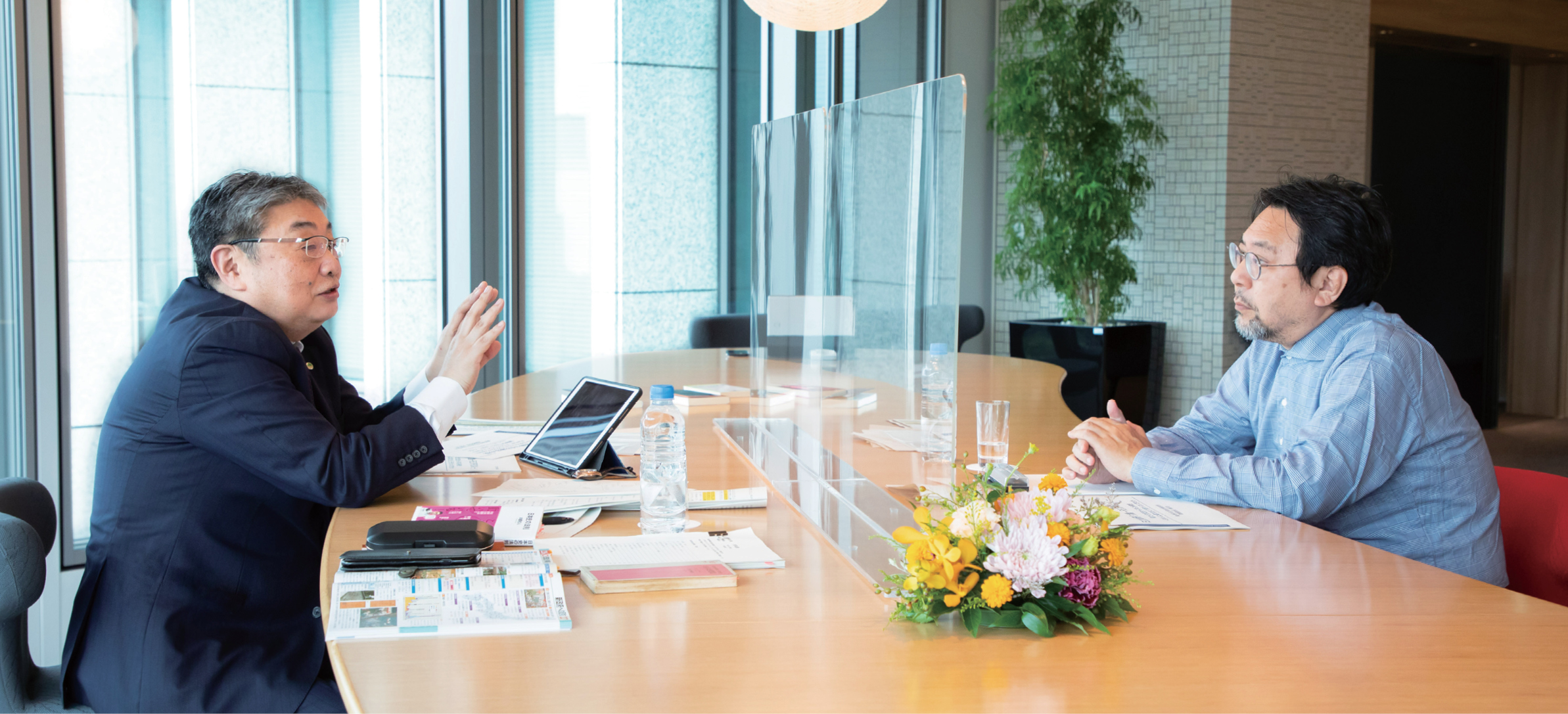
Hongo:Yasuke was a slave brought by Valignano. Nobunaga negotiated and made him his vassal as a samurai. The book African Samurai was a big hit in the US. It was written by historian Thomas Lockley; the book itself is half fact and half fiction. There was also a talk about making it into a movie. Yasuke was the epitome of diversity, so it’s no surprise he is still talked about today.
Naito:Whether it was because of Nobunaga’s forward thinking, we don’t know, but he kept those he liked near him, regardless of where they came from. I am very encouraged by the fact that not only Japanese people but also foreign nationals were in Japan at that time. By talking and interacting with various people, new wisdom is gained.
Hongo:This may be sound like a theory of Japanese people, but because Japan is an island country, there was little concern about attacks from other countries. And the warm climate meant there was little intense violence historically. In Heijo-kyo and Heian-kyo, there was no concept of protecting cities with walls. I think that a country where there are no ethnic groups nearby and there is little fear of invasion would create a national character that is inherently open to diversity.
Naito:What you point out and made me realize in your book Thinking Japanese History was that the cities of Heijo-kyo, Heian-kyo and Fujiwara-kyo did not have walls. It is true that there were no walls in Kyoto, so various people could enter, and the government and the emperor at that time moved to other prefectures or came back depending on the state of affairs.
The NHK historical drama The 13 Lords of the Shogun*6 is scheduled to be broadcast in 2022. It covers the bloody period of power struggle within the bakufu.
Hongo:Because communications were not developed, conflict occurred. With a bit more education, things might have been settled through talks, but that wasn’t the case at the time. “Talking is too much trouble; kill them” was more the line of thought then.
Naito:In ancient times, it is often said that the opposing forces were killed immediately, but in the Kamakura period, various methods and strategies would have seen progress. I wonder why they were so occupied with power struggles and battles.
Hongo:The nobility was established in the Heian period and gradually evolved. But though they grew arrogant, they didn’t kill people just because they fought for power. After all, conflict decreases with maturity.
Then the samurai appeared. Samurai fought in the beginning, but due to the accumulated know-how, they fought less in the Muromachi period. In the Edo period, political strife became very severe, but even when someone lost, he would not be told to commit seppuku. But as the times change, violent people appear.
Hongo:I can hear people around me saying, “Why is it necessary to study Japanese history in a global society like today?” But if Japanese people don’t know about Japan, they will not be able to talk about diversity. Gathering people who can discuss the knowledge, history, and stories of countries and regions leads to the first form of diversity. I think innovation also comes from friendly competition between people with completely different sensibilities, educations, and traditions. This will be the last lifeline when the meaning of studying history is questioned.
Naito:History is filled with the wisdom of mankind, and at the same time, it is also filled with a wide variety of unthinkable failures. The issues we are facing now-which may or may not be working well-are similar experiences as those of people hundreds of years ago. If we compare human intelligence to computers, we fear that while storage is growing, processors have not changed much. I’m always worried that if I only judge things from a narrow perspective, I’ll repeat the same mistakes.
Learning from history may mean not just understanding political and economic problems but also looking for clues to your own actions. New technologies are important, but we need to look back at the past through classics and history.
Hongo:I have been thinking about the significance of studying history for decades, My job is research and historical compilation, but I also have the opportunity to teach students at several universities. I always pose the question “What is the significance of studying history?” at the final examination at the end of the year, but it’s hard to come up with interesting ideas.
Why study history? There are students who study history as liberal arts, but what should a student who has majored history for four years of college say when asked on a job-related test, “What are the benefits to our company of studying history?” I feel I have to have the answer, and that’s what drives my research.
Naito:The other day, I looked at a history reference book from the Sigma Best series (Bun-eido) that I used when I was a high school student. It listed four points in time for the establishment of the Kamakura bakufu: the establishment of the Samurai-dokoro (the Board of Retainers) in 1180, the acquisition of control over the eastern provinces to the east of the Tokaido in 1183, the establishment of Shugo and Jito (provincial constables) in 1185, and the inauguration of Minamoto no Yoritomo as Generalissimo in 1192. The book states that the Kamakura bakufu was established in both name and reality over 12 years through these four events. When I was in high school, I simply tried to memorize the years. If I had understood these things better when I was in high school, I would have liked Japanese history even more.
Hongo:History should definitely be removed as a subject included in university entrance examinations. I believe this is my mission. Doing so would free students from memorization, right? I don’t think it’s good to learn history through memorization instead of talking about the people involved. An objective analysis of the society of a certain period reveals the structure peculiar to that society and clarifies the formation of that society and what kind of directionality, or vectors, it has. I believe that those who act in accordance with these vectors become historical figures who can produce historically significant results.
I was in charge of historical background research on the period for the historical drama Taira no Kiyomori. I was confused when the production staff told me that it was hard to remember because there were so many people named Taira no XXmori. We need to change the idea that history = memorization.
Even with the establishment of the Kamakura bakufu, it is impossible to say what year without the bigger idea of what the samurai government meant. If you spent a year in high school teaching a class on the theme of “What does history teach us?”, everyone would enjoy it. And if it wasn’t related to entrance exams, I think they would enjoy it even more.
Naito:I have opportunities to talk with managers from abroad, and they usually have a line or two about their own country’s history. They at least have a pretty good grasp of Roman history. In the business world, you don’t have to have that kind of knowledge. It’s not a problem if you don’t. There is the market, and you can just build a new business model there.
However, when I interact with various people, I realize that it is because of history, as you say, that I can see things from such a perspective that makes me realize that there may be new ideas in those conversations.
Hongo:Europe is the most obvious place for such conversations. In Europe, borders change frequently. That means people have to think about what their identity is. However, while it’s important to understand yourself, it’s dangerous to think of yourself as better than others because of that identity. Naturally, the other person has an identity as well, meaning such attitudes will not go over well. Diversity is something we respect each other for, and we assert our own way of thinking based on that.
Moreover, understanding the other person allows us to relatively assess our own way of thinking. That’s very important. I don't know about business, but 10 to 0 is not a desirable situation. In order to create a win-win relationship, you must relatively assess your own thoughts.
Naito:Finally, from the standpoint of a researcher, I would like to ask for your advice on the activities of our think tank.
Hongo:I like Japan, and I like Japanese towns and villages. But now the small cities in regional areas are completely impoverished. For me, revitalizing local cities is a major issue. I look forward to the sustainable community development and urban development that Hitachi is working on.
Mobility, in particular, is a major issue. It is often inconvenient for elderly people when they go to the hospital or go shopping, so I would like to see you implement autonomous driving. Mobility through autonomous driving will allow people to see through a new perspective.
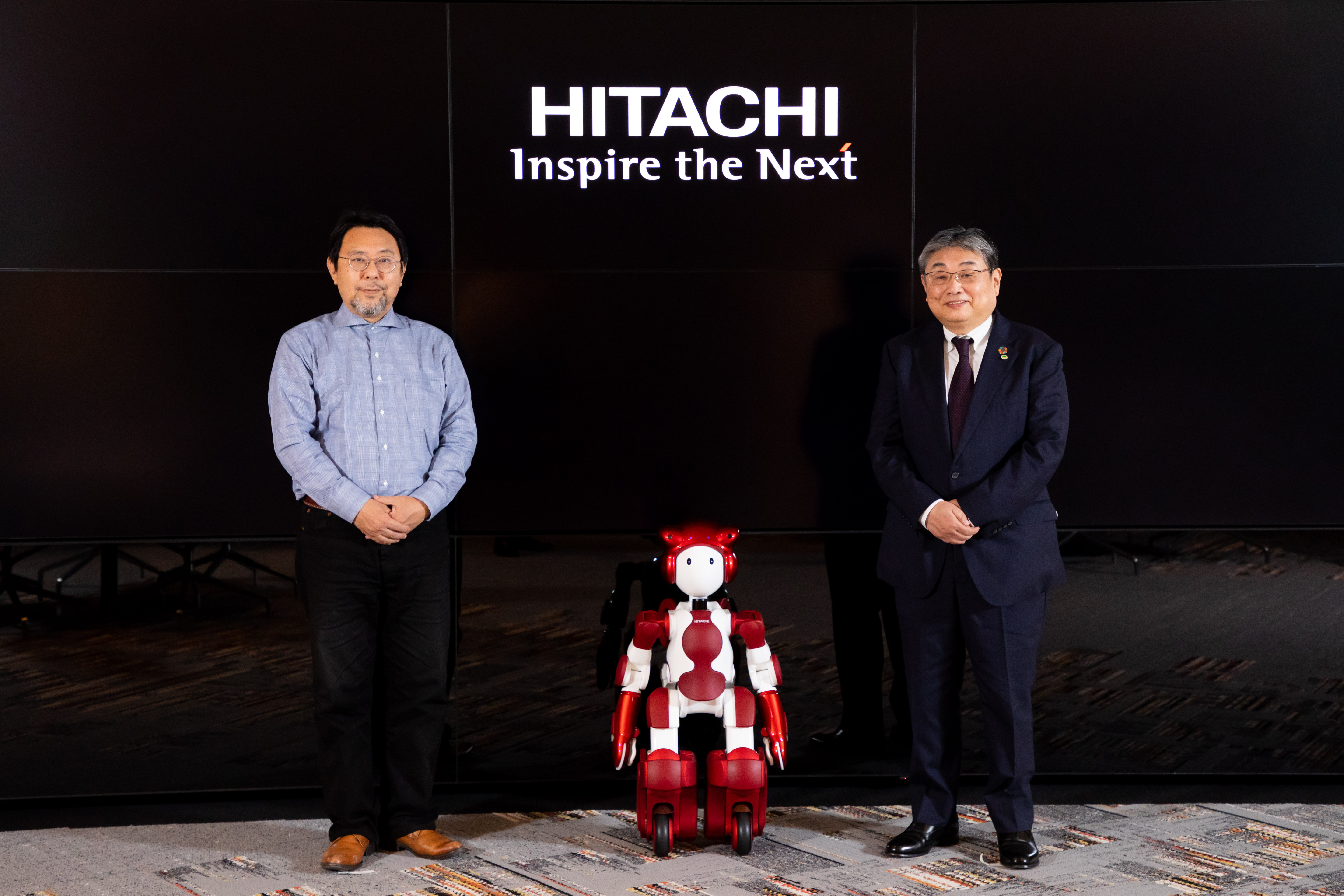
Naito:When we think about smart cities in a variety of forms, including autonomous driving, we consider a city with a population of 200,000-300,000 is easier to operate than a mega-city because the zoning of residential, commercial, industrial, or tourism zones is clearer. What is important at that time is that there are features that you can use to attract people from outside. Without it, it will eventually close from the inside. In order to attract people from outside, it is important to develop an attractive culture, and it is also necessary to get support from financial institutions in order to economically establish this culture. I think autonomous driving will be one such proposal in that kind of unique community development. Recently, the word walkability is often used when thinking about cities. The idea is to make it a fun town on foot. Hitachi is currently working with the city of Matsuyama to develop a community based on citizen participation using data. It was selected as a model smart city project by the Ministry of Land, Infrastructure, Transport and Tourism in 2020*7. It aims to create urban spaces where people can live without the need for cars through community development with citizen participation based on data. There may be a way to solve mobility problems by making the whole city easier to move around in. In order to design with various elements in mind, city designers are needed. But I feel that in order to create a town, there has to be a key person who likes the city. I imagine you feel attachment to a town or a village from a view point of a historian.
Hongo:I am trying to put community development into practice on the Miura Peninsula. The Jorakuji of the Jodo sect has five Buddha statues by Unkei and has a long history and various stories attached to it. I want to create a system that can call up those stories as manga or text materials using QR codes while visiting temples. It took us 15 years to introduce IT networks into our daily lives since the term ubiquitous society was in vogue. I would like to roll this out in the city of Kamakura. It is important to be able to enjoy a city or town on foot.
I will continue to study history in the future. I am preparing to write a history book that makes medieval history easier to understand.
Naito:I'm looking forward to it. Thank you very much for the wonderful discussion today. It has made me want to go back and re-learn what I studied in high school.
* This talk was held with physical distancing measures in place.
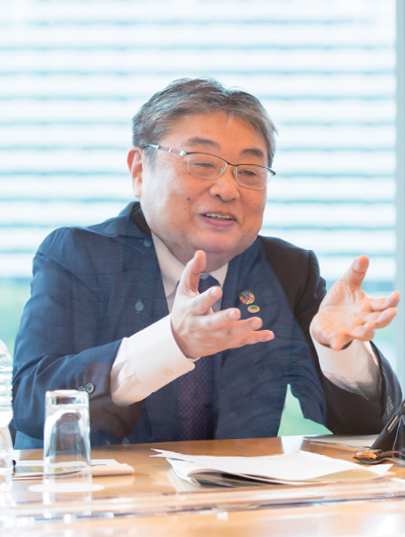
One of the reasons many people struggle with Japanese history is that there are too many people with the name Fujiwara. About 70 people with that name appear in high school textbooks. Professor Hongo taught me to think about history in terms of stories. Through this discussion, I felt once again the significance of studying history, especially the importance of my own country’s history. The importance of supposing what IFs in history and trying to analyze events from different perspectives may be similar to business. I just realized that we can’t get caught up in stereotypes and preconceptions, and that in some cases we even have to question the authority. I have always believed that innovation comes not from nothing but from a combination of existing knowledge. History is existing knowledge, and it was very encouraging that Professor Hongo suggested that this is the significance of studying history.
Osamu Naito
Chairman, Hitachi Research Institute